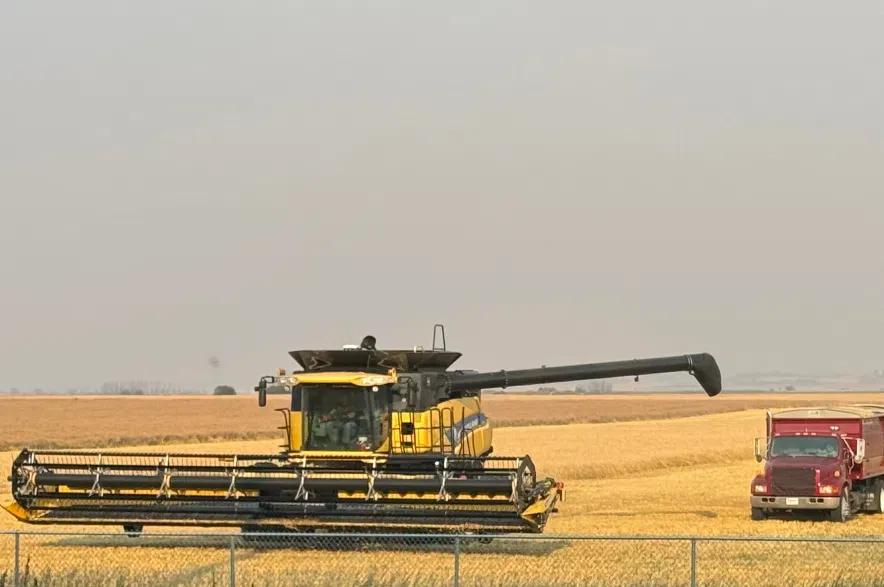Harvest in Saskatchewan is officially done with the provincial government saying 100 per cent of crops are in the bin as of Oct. 21.
The final provincial crop report said most crops got off to a good start this year thanks to the moisture brought on by the heavy rainfall from June and May. Their growth was accelerated by heat waves in August and July.
“I feel pretty good. We’re always optimists by nature. I think farmers have to be, in order to try again every year,” said Will Robbins, a board member of the National Farmers Union who farms west of Saskatoon.
Robbins said he had a significantly better yield this season than he did over the last three years due to the drought conditions.
“We sort of averaged out over all our crops into an average year,” Robbins said. “We had a very good wheat crop, we had a poor pea crop and a sort of an average lentil and oat crop.”
He said the provincial crop report accurately reflected the experience he and his neighbours had this year.
The report said harvest began in the southwest and southeast in early August. By the end of the month, it was in full swing across the province.
The report stated that yields for legumes and fall cereals were above the 10-year average. Winter wheat averaged 46 bushels per acre and fall rye averaged 52 bushels per acre, and spring-seeded cereals averaged 46 bushels per acre.
The province said the average silage yield for the province is 6.37 tons per acre, lower than last year’s seven tons.
East-central and southern areas of the province saw above-average yields while west-central and northern regions saw below average yields.
In August, Agriculture Minister David Marit said it was too early to predict payouts for crop insurance, but said crops appeared to be in good condition based on his travels across Saskatchewan.
The Government of Saskatchewan announced several changes to the program in 2023, discontinuing premium discounts and surcharges which has sparked criticism.
“Our experience overall has been positive,” Robbins said.
“I think every program like that has tweaks to be made, but in general it’s a very valuable program for farmers in the province and I think that it’s indispensable for some farmers to sort of even out those fluctuations between good years and really bad years.”
Robbins said some of the changes are cost reduction measures by the government motivated by worries of large payouts.
“I understand but I think the reality of the situation going forward here is that our climate is less and less stable,” Robbins said. “We’re likely going to have more big swings and so it’s a, it’s an indispensable program that’s going to become even more indispensable for farmers in years to come.”
The National Farmers Union has lobbied for a Canadian farm resiliency agency for governments to tackle questions posed by climate change and how it poses a risk to farmers.







